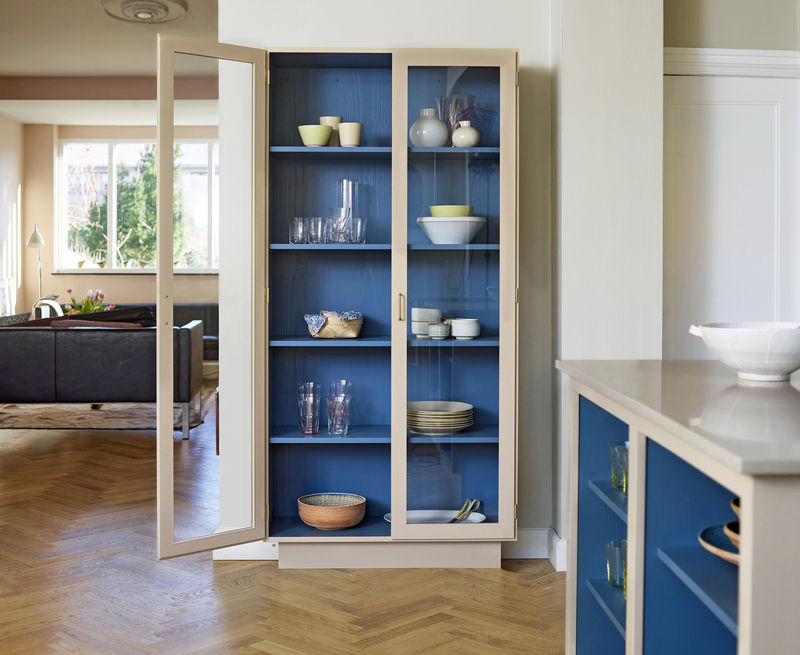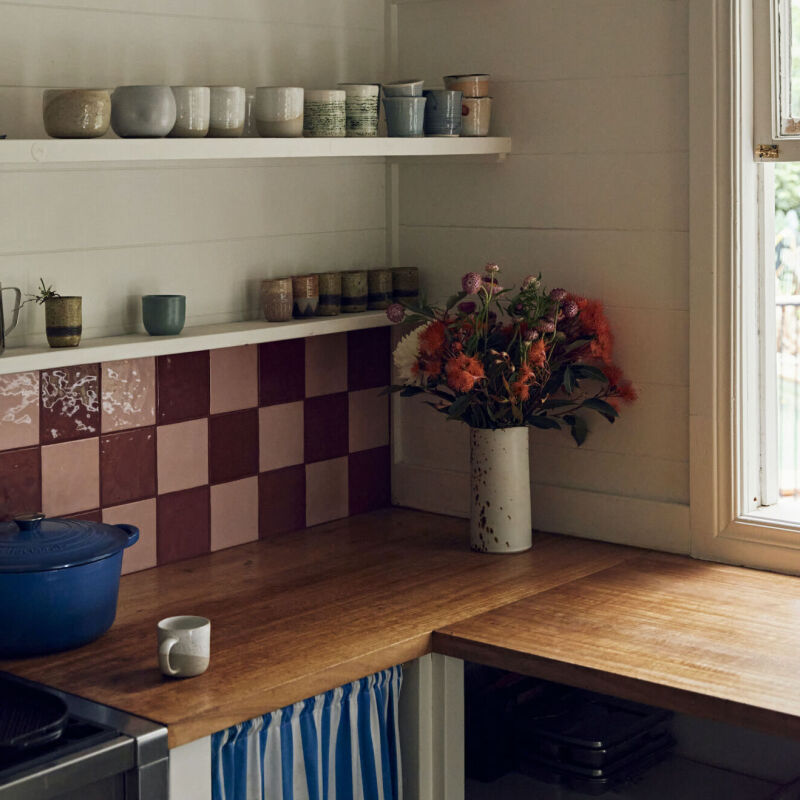Now surfacing: shou sugi ban–Japanese-style charred wood–in eye-opening shades. Torched first, the planks are then stained to create a combination that accentuates the pattern of the grain while introducing a dose of color. The new palette is being offered by two shou sugi ban specialists, Delta Millworks of Austin, Texas, and reSawn Timber Co. of Telford, Pennsylvania, and has interior and exterior applications. Take a look at some samples, and start picturing the possibilities.
Delta Millworks
 - Green(REDWOOD)-Remodelista.jpg)
Above: Shou sugi ban was initially devised as a way to make timber resistant to fire, rot, and insects: Read about it in our post Dark Wood. Of late, applying flame to wood has become popular as a decorative finish–and a technique to tackle among DIYers (see a DIY Shou Sugi Ban Tabletop). Partially burned and then sanded wood–a pattern Delta Millworks calls Tiger–takes well to color stains. Most of Delta’s shou sugi ban is made using Southern cypress, but not all–this example is redwood.
-AspenGreen-Remodelista.jpg)
Above: Shou sugi ban specialists since 2008, Delta Millworks has been offering custom colorways for the last three years. Aspen Green is shown here
-Turquoise-Remodelista.jpg)
Above: Turquoise cypress.
-RedWash-Remodelista.jpg)
Above: Red Wash cypress.
Delta Millworks makes all of its products to order and can match any color; prices available on request. Go to Delta Millworks to see the company’s full shou sugi ban palette.
reSawn Timber Co.

Above: Specialists in traditional shou sugi ban, reSawn Timber has just debuted a collection of 18 new cypress oil finishes in a spectrum of colors. Shown here, Yasai.

Above: Mitsuto.
The company explained its multi-step process to us: “The wood is first milled to spec (with either square edges, tongue and groove, standard shiplap, or custom shiplap with reveal). The next step is to carefully char the cypress, douse it with water, allow it to cool, and then brush it to remove dust and loose debris. The color comes from the oil finish that is then hand applied–it both colors the wood and acts as a sealer. For interior applications, we typically apply the oil finish to the face only; for exterior, we recommend applying the finish to all four sides of the wood to further seal and protect it.”

Above: Jinzu is for interiors only, but most of the company’s charred colors have an exterior grade oil that further protects against the elements.

Above: Pinku; reSawn Timber Co.‘s prices start at $8/square foot.
Read our Shou Sugi Ban Primer, and on Gardenista, take a look at Before and After: A Charred Wood Cottage on a $45K Budget and A Teahouse, Burned and Blackened (On Purpose).
Like the look of bright wood? Go to Trend Alert: 10 Rooms with Color-Washed Wood and Color-Stained Furniture, the Next Big Thing?
Frequently asked questions
What is shou sugi ban?
Shou sugi ban is a Japanese technique for charring wood to make it resistant to fire, insects, rot, and weathering.
What is torched lumber?
Torched lumber refers to wood that has been burned or charred using the shou sugi ban technique.
What are some benefits of shou sugi ban?
Shou sugi ban makes wood more durable and insect-resistant, and gives it a unique and attractive appearance. It also reduces maintenance requirements for the wood.
Can shou sugi ban be used for both indoor and outdoor applications?
Yes, shou sugi ban can be used for both indoor and outdoor applications, as it makes wood highly resistant to weathering, rot, and insects.
Can torched lumber be painted or stained in bright colors?
Yes, torched lumber can be painted or stained in bright colors to create a unique and eye-catching look. However, it is important to use paint or stain that is appropriate for use on charred wood.
How does the shou sugi ban technique work?
The shou sugi ban technique involves charring the wood using a propane torch or other heat source. This changes the wood's chemical and physical properties, making it more resistant to fire, insects, rot, and weathering.
Is shou sugi ban environmentally friendly?
Shou sugi ban can be environmentally friendly, as it reduces the need for chemicals and preservatives to protect wood from insects and weathering. Additionally, it can be made using sustainably sourced wood.





Have a Question or Comment About This Post?
Join the conversation